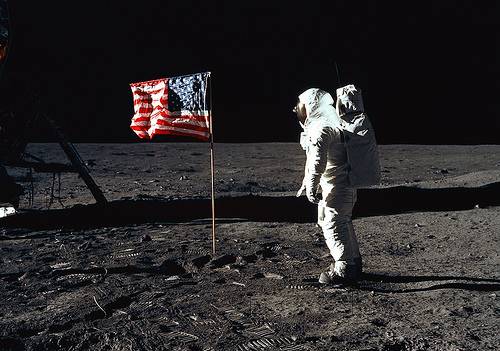Pick a three-digit number (example: 412).
Double it to create a six-digit number (412412).
Divide the result successively by 7, by 11, and by 13. There will be no remainders.
The result is the original number.
Pick a three-digit number (example: 412).
Double it to create a six-digit number (412412).
Divide the result successively by 7, by 11, and by 13. There will be no remainders.
The result is the original number.


On July 18, 1969, two days before the first lunar landing, presidential speechwriter William Safire composed the following text to be read by President Nixon if astronauts Neil Armstrong and Edwin Aldrin were stranded on the moon:
Fate has ordained that the men who went to the moon to explore in peace will stay on the moon to rest in peace.
These brave men, Neil Armstrong and Edwin Aldrin, know that there is no hope for their recovery. But they also know that there is hope for mankind in their sacrifice.
These two men are laying down their lives in mankind’s most noble goal: the search for truth and understanding.
They will be mourned by their families and friends; they will be mourned by the nation; they will be mourned by the people of the world; they will be mourned by a Mother Earth that dared send two of her sons into the unknown.
In their exploration, they stirred the people of the world to feel as one; in their sacrifice, they bind more tightly the brotherhood of man.
In ancient days, men looked at the stars and saw their heroes in the constellations. In modern times, we do much the same, but our heroes are epic men of flesh and blood.
Others will follow, and surely find their way home. Man’s search will not be denied. But these men were the first, and they will remain the foremost in our hearts.
For every human being who looks up at the moon in the nights to come will know that there is some corner of another world that is forever mankind.
Safire also suggested that Nixon call the “widows-to-be” before the speech, and that a clergyman should commend the astronauts’ souls to the “deepest of the deep” when communications ended.
17 + 77 + 47 + 17 + 77 + 27 + 57 = 1741725
Each term in this equation contains each of the nine digits once:

2 is the only even prime.
But the total number of primes is infinite.
Therefore the probability that a given prime number is even is 1 over infinity, or zero.
Hence it’s impossible for a prime number to be even — and 2 does not exist.
55 + 45 + 75 + 45 + 85 = 54748
Let’s say that the densest human head of hair contains 200,000 strands, and that the human population is 6 billion. That means there’s a group of at least 30,000 people today who have precisely the same number of hairs on their heads.
Do you see why?

Suppose the earth were a perfect sphere and you fitted a belt around its equator.
The belt would be 40 million meters long. If you now increased its length by a mere 5 meters, how high would it ride above the earth’s surface?
The answer, surprisingly, is 0.8 meters — well above the current limbo record.